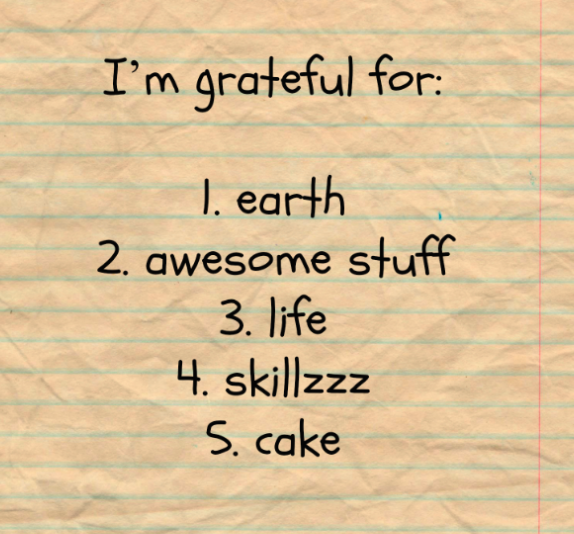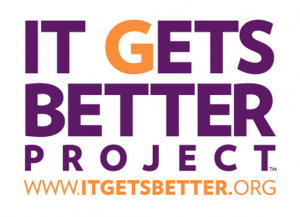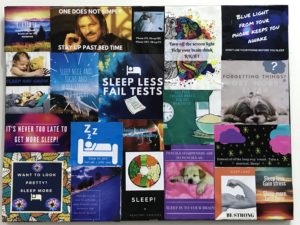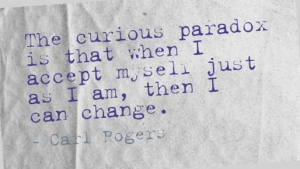In a prior post I wrote about positive psychology—which is the study of the things that make life worth living—and why it is such a perfect fit when you’re trying to teach kids about health.
This week, I’ll share some easy and effective ways that you can incorporate the practices into your class.
Know Your Strengths
It’s said that character strengths are the backbone of positive psychology. You can find out what yours are by taking the strengths survey at the Via Institute on Character.
I have my students take the survey for youth, and then after a group discussion, they create posters describing times that they have demonstrated their top strength.
This discussion is by far the best part of the project, and one of the highlights of the semester. Many of the kids have a hard time recognizing their own strengths and an even harder time talking about themselves.
What’s great is that when they are struggling to find examples, the other students usually chime in to help each other out. Often times, we realize that the students who have been chiming in the most have teamwork as their top strength. We always get a kick out of how uncanny the results usually are.
Through this activity, the students learn more about character strengths, themselves, and each other. It’s a great bonding experience, and offers an individualized alternative to some of the more generic self-esteem lessons from the past.
Attitude of Gratitude
Practicing gratitude has been scientifically proven to improve not just our mental and emotional health, but our physical health as well. One of the quickest ways we can do that is with a gratitude list.
I have my students do one in their journals at the beginning of each week. I tell them not to worry about what they write, just jot down five things that come to mind. Usually I see similar things on these lists—mom, dad, wi-fi (yes, wi-fi)—but just the other day, I saw this little gem…

Of course, seeing this caused me to open up my own journal and add one more to my list… 6th graders. I’m grateful for 6thgraders.
Acts of Kindness
Giving back. How many of our students are involved in community service? Is it something they are personally invested in, or is it just something they do to pad their resume? I think this is a question that many of us educators struggle with.
How can we teach the kids to give back to our communities and take care of our environment? Not just as a one-off, but in a sustainable and meaningful way?
The folks at DoSomething.org have found some really creative ways to go about it. One of my favorites is a partnership with the AARP that has teens teaching tech skills to senior citizens in order to improve their quality of life. Have your students dig around the site for some ideas and get a project going as a way to practice advocacy.
Connecting to Your Community
Not only does a sense of belonging make us happier, it also helps us make wise choices.
A new book has just come out that has been gaining a lot of attention for its theories on addiction. According to the author, addiction isn’t just brought on by the chemical make-up of our brains, but by feelings of isolation.
“So the opposite of addiction is not sobriety.
It is human connection.”
– Johan Hari, Author, Chasing the Scream: The First and Last Days of the War on Drugs
An important thing to keep in mind when as we reframe our drug prevention. For all of the negative factual information that we need to teach kids about drugs, we have to make sure we’re balancing it out, with positive prevention that teaches them about inclusion and lets them know that they belong.
The Power of Play
As health teachers, we know the research on this one. Playing not only releases endorphins, but it stimulates brain development and actually makes us happier. During adolescence, it’s important that we review this with the kids. They’re at an age where playing starts to seem silly and sports become more and more competitive. Sometimes they need to be reminded that physical activity is supposed to be fun.
Why not get them outside for an impromptu game of freeze tag or capture the flag? Or coordinate a school-wide dance break? Whatever they decide, remind them that it’s hard to feel self-conscious when they’re all in it together.
Finding Flow
Also known as “being in the zone,” flow is a key component of positive psychology.
It can be reached through any number of ways, and it’s important to help kids understand what it is, and when in their life they have had that feeling. Whether it’s through playing sports, computer coding, learning an instrument, or even writing fan fiction, it’s clear that the health benefits of flow are immense.
In her powerful TED talk on the bright side of stress, Kelly McGonical – a health psychologist out of Stanford – puts it like this,
“Chasing meaning is better for your health than trying to avoid discomfort.”
That’s become almost like a mantra in my health room, and I try to keep it in mind with most everything I do. It’s an amazing talk, and I’d highly recommend watching it with the kids.
Trying Something New
Even just taking a different route, mixing up a routine, or learning a new game can make us feel happier.
Why don’t you try something out of the ordinary in your class? If you haven’t gotten the kids meditating yet, now would be the perfect time to start. It can seem scary and strange at first, but the benefits are clear, and there are some great resourcesout there to help.
It’s time to flip the whole concept of health class on its head. Rather than an awkward place, filled with worksheets and warnings about all of the ways that you can ruin your life, why not make it a warm and inviting one, filled with all of the ways that you can make it better.
For more on positive psychology, check out this great background video, and then access some of the educator resources available from The Greater Good Science Center at UC Berkeley.





